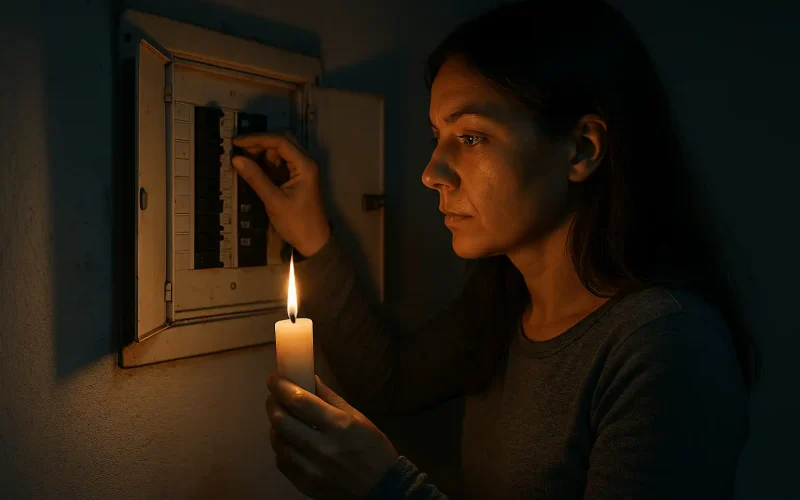Losing power isn’t just annoying—it can throw your whole day off. From cold dinners to dead phone batteries, it’s a reminder of just how much we rely on electricity. But when the lights suddenly go out, do you know what to do next?
Here’s a step-by-step guide to help you stay safe, protect your appliances, and know when it’s time to call in the pros.
Start by Checking What’s Affected
Before jumping to conclusions, take a look around. Is it just your place, or does the whole street seem dark? If nearby houses or streetlights are still on, chances are the problem’s coming from inside your home.
If it’s only your property that’s lost power, your safety switch might’ve tripped—or there could be an issue with your wiring. This is when reaching out to a licensed electrician in Melbourne is a smart move.
Switch Off Major Appliances
Once you’ve confirmed the outage, it’s important to turn off any big appliances or devices. Why? Because when the power comes back, it can surge—and that spike could damage your fridge, TV, computer, or even your lights.
Unplug or switch off things like heaters, washing machines, and stovetops. Leave one light on so you’ll know the moment the power returns. Try to keep the fridge and freezer closed to help keep food cold for longer.
Check Your Switchboard

Sometimes, a power outage isn’t caused by a street-wide issue—it could be something inside. Head to your switchboard and look for any downed switches. If you spot one, try flipping it back up.
But if it trips again immediately, there’s likely a fault in one of your appliances or circuits. Avoid testing it repeatedly. Instead, contact a trusted Melbourne electrician to take a proper look.
Contact Your Energy Provider
If the whole street’s dark, it’s probably a bigger network problem. Most energy providers in Melbourne have outage maps online, or you can call them directly to report the issue and get updates.
Save the number of your energy provider somewhere easy to find, especially if outages happen regularly in your area.
Use Lighting That’s Safe
It’s tempting to grab candles, but they’re not the safest option—especially around kids or pets. Battery-powered torches or LED lanterns are a better call. Keep a couple of charged power banks or backup lights in a drawer for moments like this.
If you do need to use candles, never leave them unattended and place them well away from anything flammable.
Prepare for a Longer Outage
Most blackouts in Melbourne don’t last too long, but if there’s storm damage or a major fault, you might be waiting a while. A basic emergency kit can help you get through it comfortably.
Here’s what’s worth having on hand:
- A torch or lantern (and spare batteries)
- Fully charged power banks
- Bottled water and dry snacks
- Battery-powered radio for updates
- First-aid kit
- Any medications you might need
If anyone in your household relies on powered medical equipment, make sure you’ve got a plan for emergencies. Talk to your provider about backup options or get advice from an electrician Melbourne residents trust to help with reliable alternatives.
Don’t Rush When Power Returns
When the power comes back, it’s best to take things slow. Turn on appliances one at a time to avoid overloading your circuits. If anything seems off—like lights flickering, switches buzzing, or a burning smell—it’s time to call in an expert.
A licensed electrician can inspect the system and get everything working safely.
Power Issues You Shouldn’t Ignore
If outages happen regularly or your switchboard keeps tripping for no clear reason, there might be a deeper issue in your wiring or electrical system. Faulty connections, damaged cables, and outdated switchboards are all common culprits—and they’re not always easy to spot.
That’s where J3t Electrical can help. We’ve seen all kinds of issues in Melbourne homes, from dodgy DIY wiring to overloaded circuits. Our team offers fast, safe, and professional support when you need it most.
Whether you’re dealing with a blackout, flickering lights, or something that just doesn’t feel right, we’re here to ensure your power stays reliable—and safe.

